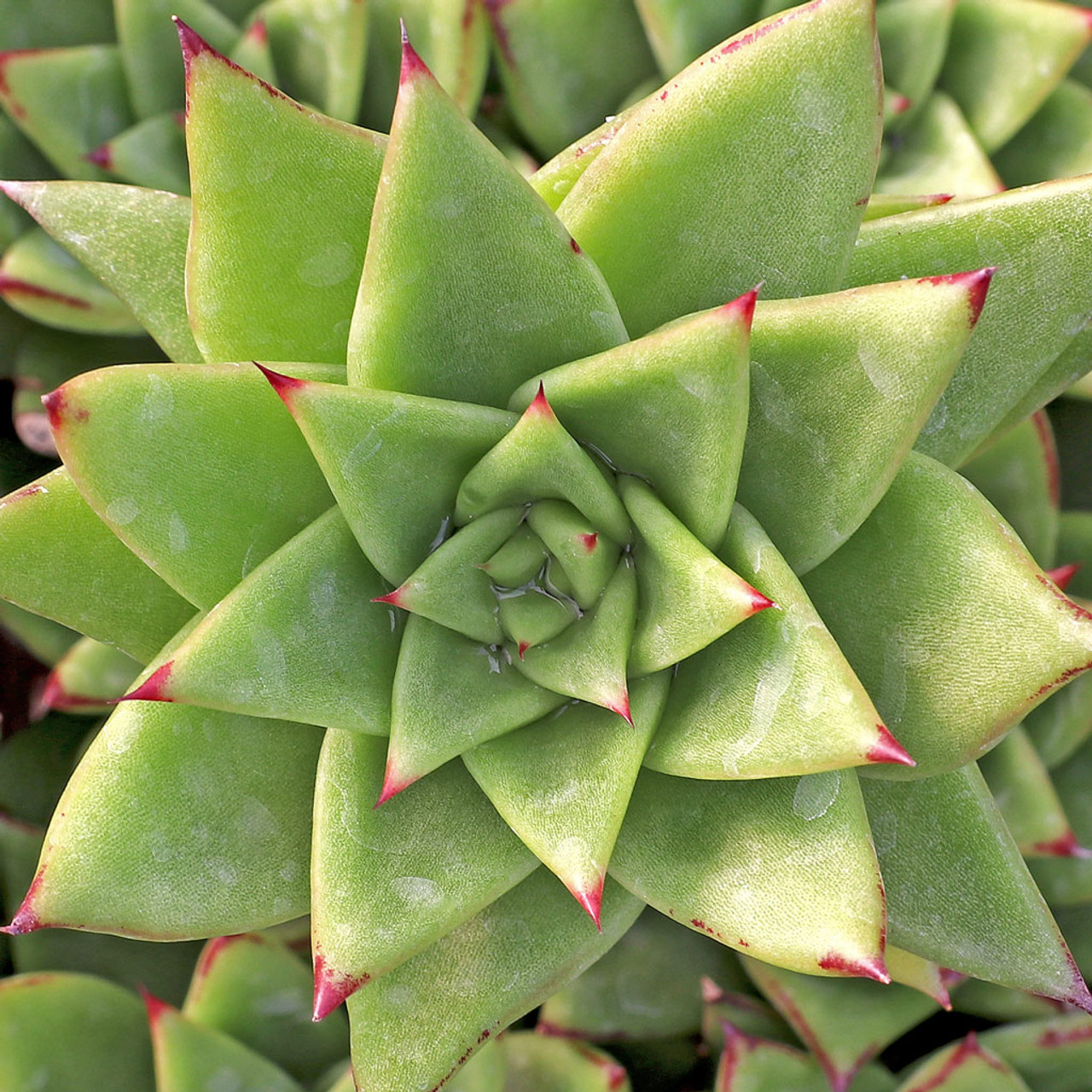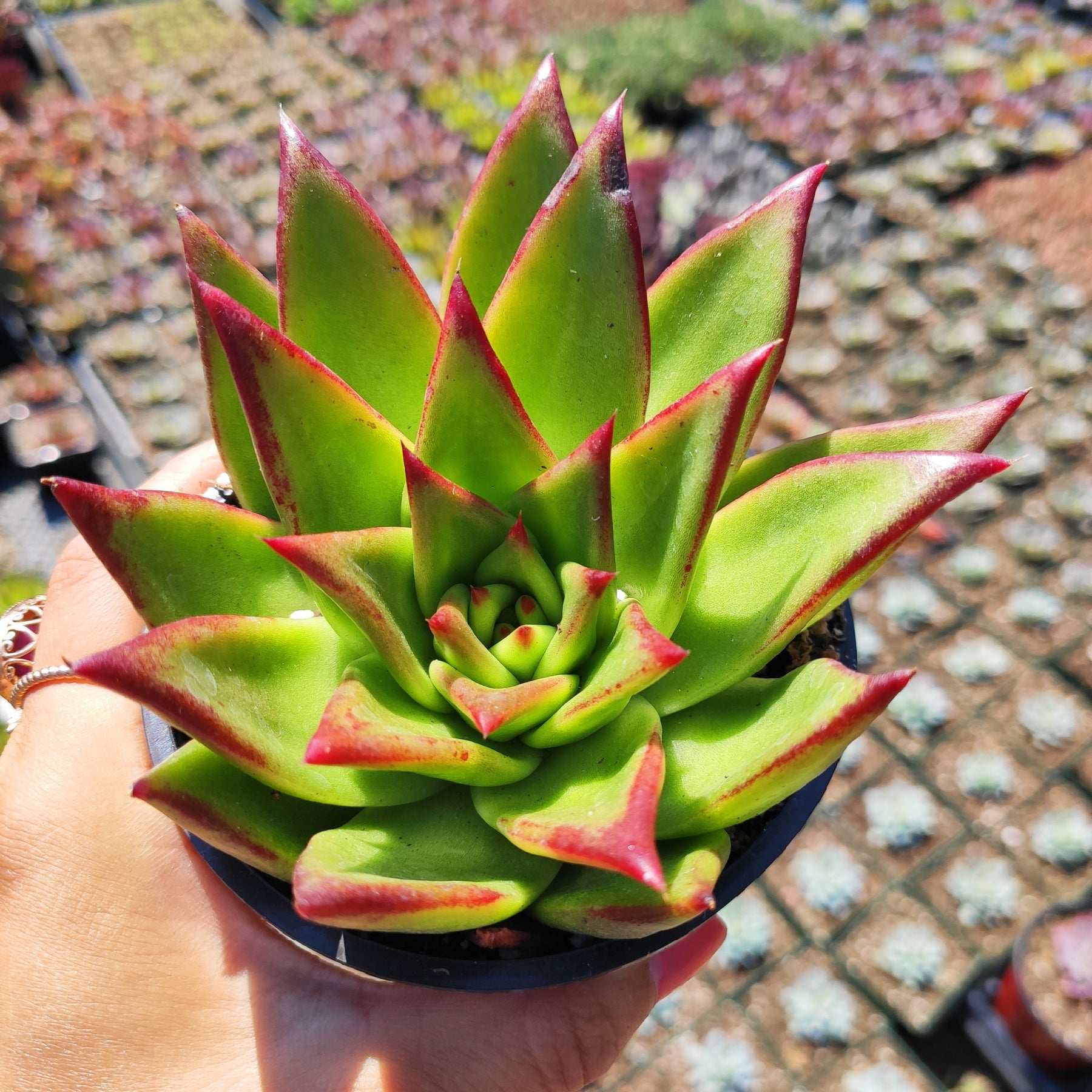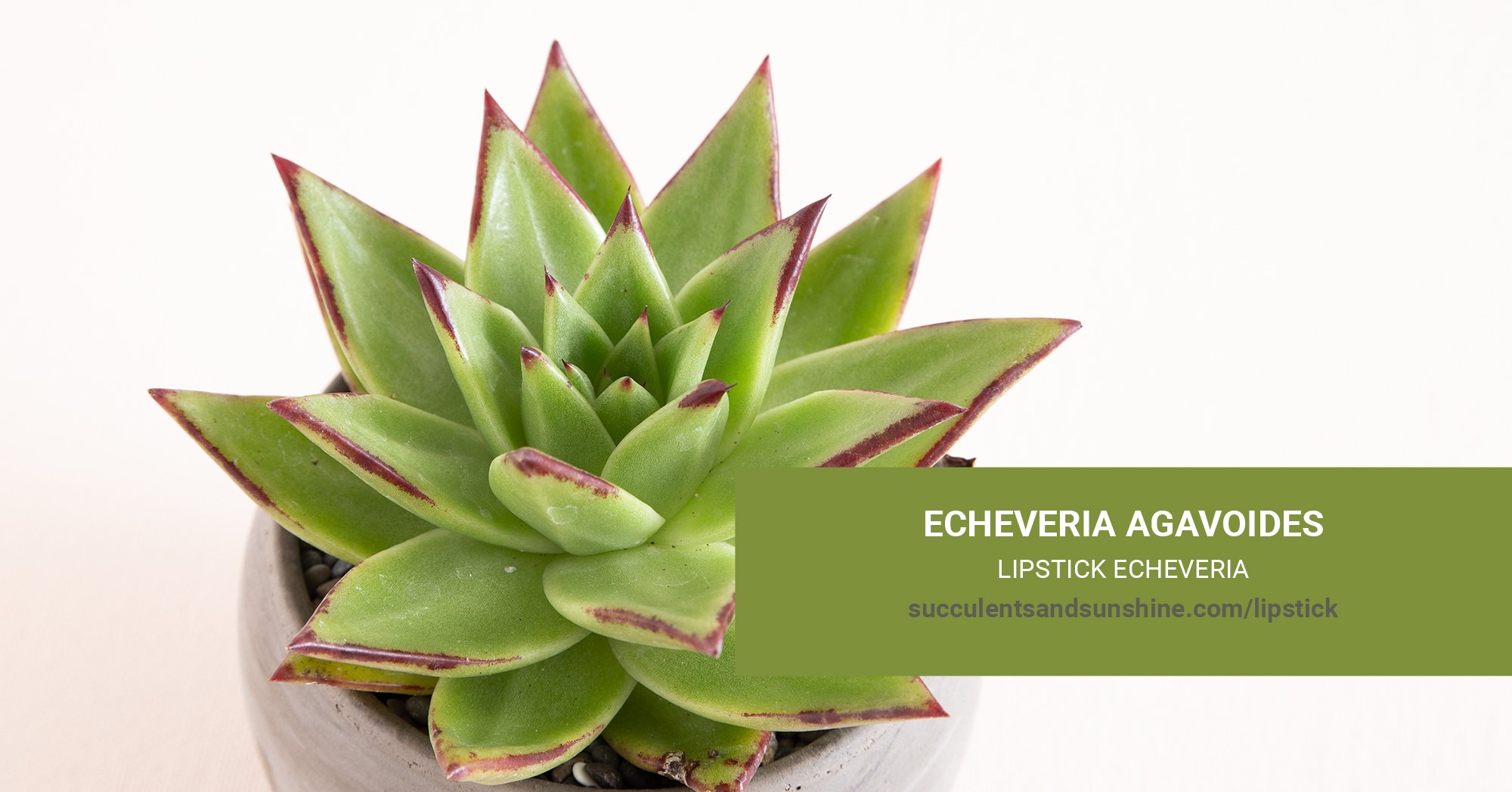This gorgeous Echeveria truly stands out when it has been “stressed” in a positive way. Its lime green leaves with red edges have earned it the nickname “Lipstick,” but its scientific name is derived from the triangular shape of its thick leaves, which resemble those of an Agave plant.
Table of Contents
Care and Propagation Information
Echeveria agavoides “Lipstick Echeveria” is a great addition to a container garden or rock garden. Its use as “filler” is a plus. In the late spring and early summer, this plant puts on a show of gorgeous red flowers.
Watering
The best way to water Echeveria agavoides “Lipstick Echeveria” is to use the “soak and dry” method and allow the soil to become completely dry between waterings. This meets the typical watering needs of a succulent.
Be sure to get our FREE watering cheat sheet to make sure your succulents are getting the right amount of water and to know how to save them if they’ve had too much.
Where to Plant
If you live in an area where the temperature drops below 20° F (-6.7° C), it is advisable to put the “Lipstick Echeveria” in a pot that can easily be brought indoors. This type of succulent likes being in places where they can get plenty of direct sunlight or partial shade.
How to Propagate Echeveria agavoides “Lipstick Echeveria”
Echeveria agavoides “Lipstick Echeveria” can be propagated by taking offsets, cuttings, and leaves, although the process may be challenging.
Cuttings
To propagate a “Lipstick Echeveria,” you should use a clean, sharp knife or scissors to cut the stem away from the plant. Let the cut area form a callous for a few days before planting it in soil that drains well.
Leaves
Place the leaf on a potting mix and lightly press it down so it’s secure. Keep the soil moist but not soggy and wait for a few weeks. After a few weeks, the leaf should have rooted and created a new plant.
Allow the leaf cutting to sit for a few days until it has developed a callous. Then, place it on a potting soil that is well-draining. Water it once the soil has completely dried out. When the roots have grown and the original leaf has withered away, plant the new growth in the soil.
Offsets
This type of Echeveria, known as “Lipstick”, will create small plants around the base of the main one. To propagate it, remove the offsets and allow them to sit for one to two days before replanting them.
Care and Propagation Information
General Care for Echeveria agavoides “Lipstick Echeveria”
Watering
The best way to water Echeveria agavoides “Lipstick Echeveria” is to use the “soak and dry” method and allow the soil to become completely dry between waterings. This meets the typical watering needs of a succulent.
Be sure to get our FREE watering cheat sheet to make sure your succulents are getting the right amount of water and to know how to save them if they’ve had too much.
Where to Plant
If you live in an area where the temperature drops below 20° F (-6.7° C), it is advisable to put the “Lipstick Echeveria” in a pot that can easily be brought indoors. This type of succulent likes being in places where they can get plenty of direct sunlight or partial shade.
How to Propagate Echeveria agavoides “Lipstick Echeveria”
Echeveria agavoides “Lipstick Echeveria” can be propagated by taking offsets, cuttings, and leaves, although the process may be challenging.
Cuttings
To propagate a “Lipstick Echeveria,” you should use a clean, sharp knife or scissors to cut the stem away from the plant. Let the cut area form a callous for a few days before planting it in soil that drains well.
Leaves
Place the leaf on a potting mix and lightly press it down so it’s secure. Keep the soil moist but not soggy and wait for a few weeks. After a few weeks, the leaf should have rooted and created a new plant.
Allow the leaf cutting to sit for a few days until it has developed a callous. Then, place it on a potting soil that is well-draining. Water it once the soil has completely dried out. When the roots have grown and the original leaf has withered away, plant the new growth in the soil.
Offsets
This type of Echeveria, known as “Lipstick”, will create small plants around the base of the main one. To propagate it, remove the offsets and allow them to sit for one to two days before replanting them.
FAQ
How do you care for Echeveria Agavoides lipstick?
This plant does best when planted in rocky, well-drained soil in a sunny to partially shaded spot. Indoors, it should be placed in an area with lots of light. It requires minimal watering during the hot season after it has been established, and it should be divided into smaller clumps every two to three years in the spring.
How often should you water Echeveria Agavoides?
Every seven to ten days.
How do you care for an Echeveria Agavoides plant?
Echeveria Agavoides Lipstick plants should not be watered too often, as this can cause root rot and other issues. Instead, they should only be watered when the soil is completely dry, so that they can receive a deep soaking.
How big does lipstick Echeveria get?
Approximately six inches in height.
What is Echeveria Agavoides used for?
Echeveria agavoides “Lipstick Echeveria” is a good addition to either a container garden or a rock garden. This plant is often used as a “filler” in these types of gardens. In the late spring and early summer, this plant produces beautiful red flowers.



